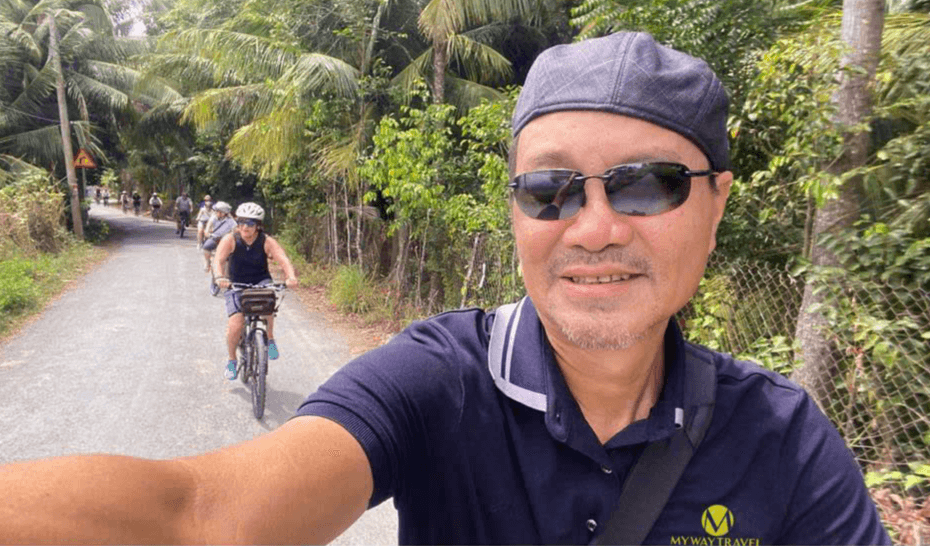Japan is a great destination all year round, and the best time to visit Japan depends on what you want to do.
Spring (late March to mid-April) is popular for seeing cherry blossoms, while autumn (November to early December) offers beautiful fall colors. If you want to avoid crowds, consider visiting during other times of the year.
Japan has four seasons, and the weather varies by region. Summer lasts from June to September, with hot temperatures, often over 31°C (88°F) in Tokyo. Hokkaido, in winter (December to early March), gets a lot of snow, making it perfect for winter sports.
The rainy season runs from mid-June to September, with June being the wettest month. By November, the rains lessen, and December to February is generally dry.
Japan has many amazing sights, including Mount Fuji and the lovely town of Hakone. You can also explore the cultural city of Kanazawa and the historic sites of Hiroshima and Miyajima Island.
Japan’s Weather Guide by Month
Japan is a destination you can enjoy at any time of the year, offering a variety of landscapes and experiences throughout the seasons.
To assist in planning your trip, we’ve compiled a monthly climate guide that details what to expect weather-wise in popular areas. We’ll also highlight seasonal attractions to make your visit memorable.
Top Activities in Japan by Season
Deciding when to visit Japan depends on the activities you want to engage in, the sights you wish to see, and the regions you plan to explore. Seasonal variations play a key role in your decision. To assist you in planning your trip, we’ve put together a list of our favorite activities and the ideal times to enjoy them.
- March-April – Witness the Beauty of Cherry Blossoms
Visiting Japan from March to April is the perfect opportunity to see the stunning cherry blossoms. This time of year marks the transition from winter to spring, and the sakura blooms can last anywhere from several days to a couple of weeks, depending on the weather. It’s one of the busiest seasons for tourism in Japan.
Keep in mind that the timing of the cherry blossoms varies each year, influenced by temperature and climate conditions. In some years, the flowers might last longer, while in others, strong winds or rain may cause them to fall prematurely.
Typically, the cherry blossoms bloom for about a week in each location, with their appearance staggered across the country. The season begins in Okinawa in early February and moves northward, reaching Hokkaido by late May. For those wanting to experience the blossoms for an extended time, traveling from south to north is a great strategy. Be sure to check out our article for the best spots to see cherry blossoms in Japan.
- June – September: Immerse Yourself in Festival Culture
The summer months from June to mid-September are the best time to explore Japan’s vibrant festivals and cultural events. Although the humidity can be quite high, this season offers a unique opportunity to experience local traditions while avoiding the larger tourist crowds.
Summer is famous for its lively festivals, known as “matsuri.” Notable events include Kyoto‘s Gion Matsuri, Osaka’s Tenjin Matsuri, Aomori’s Nebuta Matsuri, and the Awa Odori festival in Tokushima on Shikoku Island.
Additionally, this time of year is marked by spectacular fireworks displays, called “hanabi taikai.” While Tokyo’s Sumida River Fireworks are especially popular, countless celebrations take place across the country, showcasing stunning pyrotechnics.
- November – April: Hit the Slopes for Skiing and Snowboarding
From late December to March, Japan is the prime destination for skiing and snowboarding. January and February are particularly great for experiencing winter festivals, while occasional snowfall may still occur in March and April.
The ski season can extend as late as May in certain regions, but the best times to enjoy the slopes vary depending on your location.
In Hokkaido, snow typically begins to fall around mid-November, with major resorts like Niseko, Rusutsu, and Kiroro often opening their doors by the third week of that month.
March and April are fantastic months for snow sports, both at resorts and in backcountry areas. The abundant early-season snowfall ensures excellent skiing conditions right through to the season’s close, and the clearer weather during this period offers breathtaking views.
- November-December: Marvel at the Autumn Foliage
The best time to visit Japan to enjoy the stunning autumn colors is from November to December. In Hokkaido, the fall season can start as early as mid-September, while the leaves in Tokyo and Kyoto begin to turn vibrant shades of orange around mid-October.
Visiting Japan during the autumn foliage season is a breathtaking experience, and many consider it one of the top destinations for fall in Asia. Unlike cherry blossoms, the autumn leaves tend to last longer.
By late September, the changing colors start in the northern mountains, gradually spreading south to central cities like Kyoto, Osaka, and Tokyo by mid-October. The brilliant hues typically remain visible until early December. It’s worth noting that Japan’s autumn displays often peak later than in many other northern regions, with the most stunning views usually found in late November and early December.
Since autumn is one of the busiest travel seasons in Japan, it’s a good idea to plan and book your trip well in advance.
- December–January: Visit the Snow Monkeys at Jigokudani
If you’re interested in Japan’s unique wildlife, a trip to the Snow Monkey Park during winter is a must. December and January are ideal months to visit Jigokudani and see the Japanese macaques enjoying the warm natural hot springs.
The park is enveloped in steam from the hot springs, earning its name, Jigokudani, which translates to “hell valley.” However, for the monkeys, this place is far from hellish; they find refuge in the soothing waters to stay warm throughout the cold winter.
While these monkeys can be seen year-round, witnessing them surrounded by steam in the hot springs against a backdrop of sparkling white snow is an unforgettable experience.
- November-February: Winter Activities
The optimal time to visit Japan for viewing Mount Fuji is from late autumn to early spring, specifically between November and February. During this time, the skies are generally clear, providing stunning views of the mountain, especially in the early mornings when the visibility is best.
These months also offer a chance to see lingering autumn leaves or the first signs of cherry blossoms in some areas. Lake Kawaguchi is one of the best spots for taking in the picturesque sight of Mount Fuji.
It’s important to note that from April to August, Mount Fuji is often obscured by clouds and haze, and the start of the typhoon season in September further decreases your chances of seeing it clearly.
—
If you want to experience the best of Japan Tours, explore this lesser-known region. Add this unique adventure to your customized Japan itinerary for an enchanting journey across the country.





